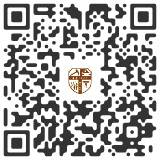限定内容
主题
- 91,725 篇 电子商务
- 5,403 篇 中国
- 4,617 篇 互联网
- 3,587 篇 企业
- 2,750 篇 对策
- 2,133 篇 跨境电子商务
- 2,008 篇 物流
- 1,995 篇 发展
- 1,918 篇 中小企业
- 1,778 篇 人才培养
- 1,742 篇 电子商务专业
- 1,640 篇 农产品
- 1,615 篇 企业管理
- 1,540 篇 internet
- 1,477 篇 信息技术
- 1,466 篇 网络营销
- 1,409 篇 电子商务平台
- 1,355 篇 信息化
- 1,296 篇 消费者
- 1,265 篇 应用
机构
- 479 篇 武汉大学
- 391 篇 华中科技大学
- 333 篇 贵州大学
- 322 篇 安徽财经大学
- 313 篇 哈尔滨商业大学
- 290 篇 西安交通大学
- 265 篇 武汉理工大学
- 246 篇 上海理工大学
- 244 篇 浙江大学
- 235 篇 中南财经政法大学
- 223 篇 中国人民大学
- 218 篇 华中师范大学
- 211 篇 东北财经大学
- 202 篇 江西财经大学
- 202 篇 西南财经大学
- 195 篇 同济大学
- 185 篇 渤海大学
- 173 篇 四川大学
- 173 篇 厦门大学
- 167 篇 北京交通大学
文献订阅
- 翻转课堂教学法在电子商务基础课程中的应用
- 桂林电子科技大学 广西桂林541004
-
来源
 维普期刊数据库
详细信息
维普期刊数据库
详细信息
- 电子商务平台“大数据杀熟”行为的法律性质及治理对策探析
- 贵州大学法学院 贵州 贵阳
-
来源
 维普期刊数据库
汉斯期刊
维普期刊数据库
汉斯期刊
详细信息
- 电商与AI:发展与挑战
- 江苏大学科技信息研究所 江苏 镇江重庆大学计算机学院 重庆
-
来源
 维普期刊数据库
汉斯期刊
维普期刊数据库
汉斯期刊
详细信息
- 文博类文创产品的电商营销策略分析
- 贵州大学历史与民族文化学院 贵州 贵阳
-
来源
 维普期刊数据库
汉斯期刊
维普期刊数据库
汉斯期刊
详细信息
- 电子商务视角下基于车联网数据的车险客户画像构建与营销创新研究
- 贵州大学经济学院 贵州 贵阳
-
来源
 维普期刊数据库
汉斯期刊
维普期刊数据库
汉斯期刊
详细信息
- 论大数据背景下电子商务中的两个伦理问题与对策——以布伦塔诺伦理学为基础
- 贵州大学哲学学院 贵州 贵阳
-
来源
 维普期刊数据库
汉斯期刊
维普期刊数据库
汉斯期刊
详细信息
- 大数据背景下制造业电子商务发展研究
- 江苏大学马克思主义学院 江苏 镇江
-
来源
 维普期刊数据库
汉斯期刊
维普期刊数据库
汉斯期刊
详细信息
- 电子商务背景下农业企业市场营销的优化策略研究
- 贵州大学经济学院 贵州 贵阳
-
来源
 维普期刊数据库
汉斯期刊
维普期刊数据库
汉斯期刊
详细信息
- B2B电子商务平台应用与企业出口贸易稳定性——考虑出口市场多元化的中介效应
- 中共洛阳市委党校(洛阳行政学院/洛阳市社会主义学院) 河南洛阳471935江苏科技大学 江苏镇江212100
-
来源
 维普期刊数据库
维普期刊数据库
 同方期刊数据库
国家哲学社会科学学术...
同方期刊数据库
国家哲学社会科学学术...
详细信息




